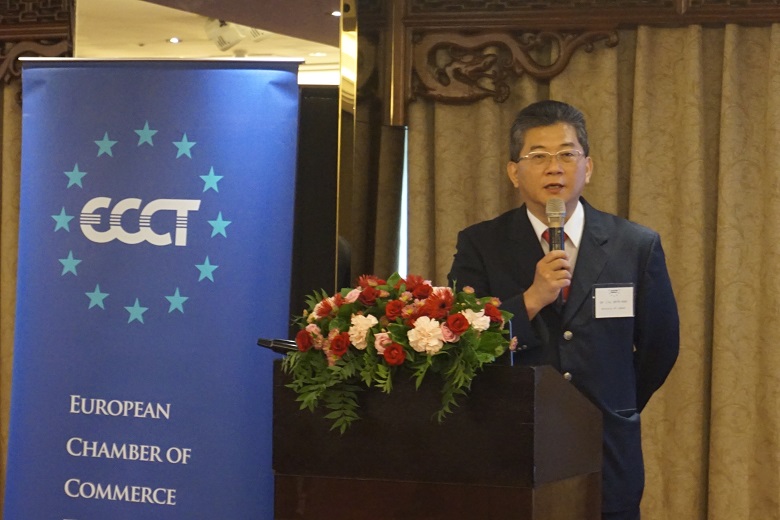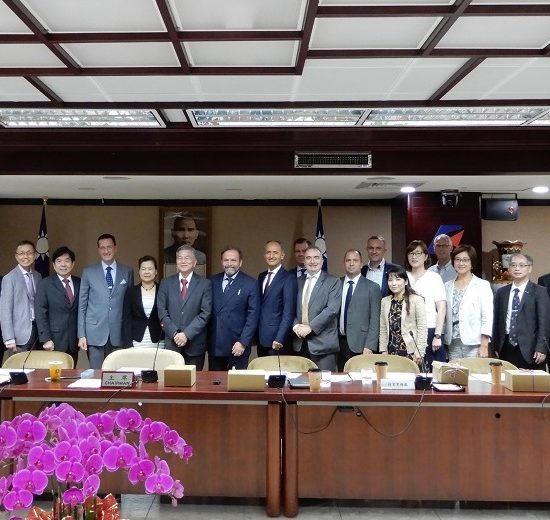Introduction to the Labour Dispute Act

For the Labour Dispute Act PPT, Please click Here.
The ECCT's Human Resources committee hosted a lunch with guest speaker Dr Liu Shih-hao, Deputy Minister of the Ministry of Labour. In his presentation the speaker gave a general introduction to the Labour Dispute Act.
The act was passed into law on 9 November 2018 and will become effective on 1 January 2020. The new act aims to better protect workers' rights in Taiwan's judicial system and make it easier to resolve disputes between employers and employees.
According to the speaker, current labour dispute procedures are time-consuming and costly. In addition, the location of courts (in the jurisdiction of the company’s head office) may be to the disadvantage of the labourers. Moreover, the current burden of proof may be to the detriment of labourers (because employers usually hold relevant evidence).
In the process of deciding the best system for Taiwan (part of judicial reforms started in 2017), authorities evaluated the systems of various countries Europe and elsewhere, such as Japan. The final version of the act comprises 53 articles in five chapters. The act emphasises professional judicial proceedings, the expansion of the definition of labour dispute, the formation of a labour arbitration committee for civil appeals, and the removal of obstructions facing workers as they take legal action against the management.
In terms of expansion of the scope of labour disputes, the law now covers disputes on civil rights and obligations arising from labour laws, group agreements, work rules, labour-management resolutions, labour contracts and other labour relations, violations of gender equality in work, employment discrimination, occupational disasters, trade union activities and disputes, non-competition and other infringements arising from labour relations.
The act stipulates that all levels of courts must set up “labour courts” presided over by judges specialising in labour law to address lawsuits related to employer-employee disputes with the aim of expediting the resolution of labour disputes. The court should hire persons who have special knowledge and experience in labour relations or labour affairs to be part of mediation committees, one to represent labour and another to represent the employer.
According to the new act, a mediation date must be designated within 30 days from the date of the labour mediation request, while the mediation and other procedures should be held and completed within three months.
The mediation committee is required to promptly listen to the statements of the parties, sort out the relevant disputes and evidence, investigate the facts and necessary evidence, present the evidence and allow the parties concerned to present their opinions on the results of his investigation of the evidence.
In terms of location for court proceedings, when the labourer is the plaintiff, the court location shall be determined by the defendant's domicile, residence, main business office, the location of the main office, or the plaintiff’s place of work.
Under the terms of the act, if a dispute is not resolved through mediation, the employer will bear the burden of proof with respect to salary and overtime pay calculations. If the litigation affects the labourer’s livelihood, the labourer may be entitled to request payment of wages, compensation, pension or severance expenses.
In addition, employers are required to review their HR policies in response to the enactment of the act. They should also note what responses should be made at different stages of labour disputes. Other aspects of the act include accelerating judicial procedures, reinforcing arbitration procedures, and protecting the rights of those concerned efficiently.
According to the speaker, the main expected benefit of the new legislation for labourers is more effective judicial relief. The act is also expected to enhance trade union functions and promote the development of trade unions. For employers, the act aims to promote compliance, strengthen management and improve harmony and stability.

